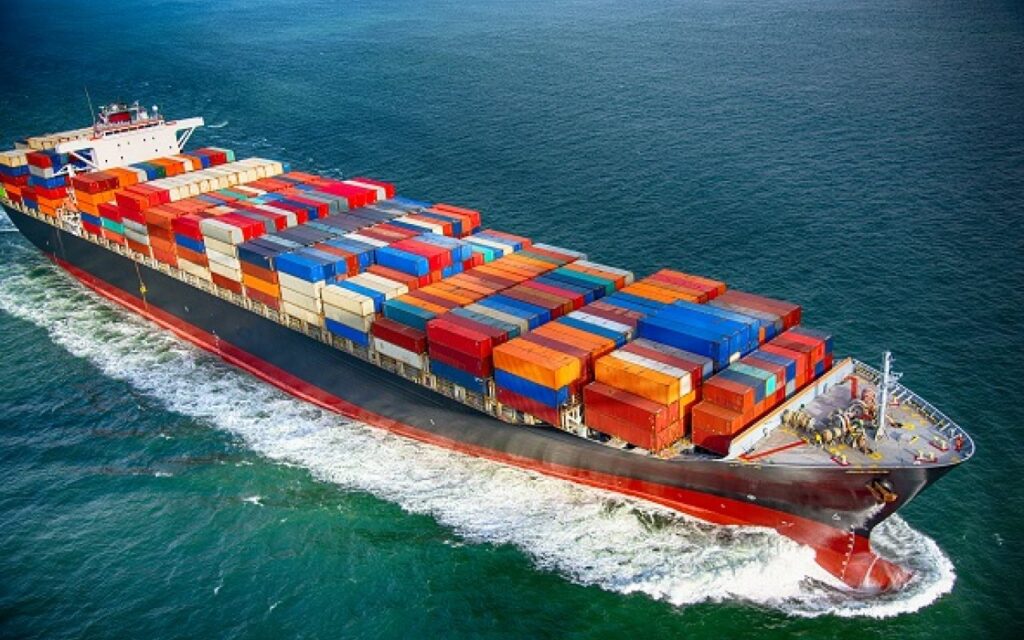- By TOP CHINA FREIGHT
- September 19, 2025
- Sea Freight, Shipping
Table of Contents
If you are an importer, one of your top concerns is often how much is sea freight from China to USA. With rising global trade, businesses must calculate shipping costs accurately to maintain profitability. The right strategy ensures not only affordable freight but also reliable delivery schedules and smoother supply chain management.

What factors influence sea freight cost from China to USA?
Sea freight rates are influenced by a combination of fixed and variable elements. Base freight rates are set by shipping lines, but surcharges such as fuel adjustment, security fees, and peak season charges can add significantly. Moreover, container type, volume, destination port, and service type (FCL or LCL) all impact pricing.
Additionally, seasonality plays a big role. For example, shipping before major holidays like Golden Week or Christmas often costs more due to limited vessel capacity. Importers should also factor in inland transport, customs duties, and port handling fees when budgeting total landed costs.
How much does a container cost from China to USA?

Container shipping is the most common choice for importers. Costs depend on size, route, and carrier. Here’s an overview:
| Container Size | Average Cost (USD) | Transit Time | Best For |
|---|---|---|---|
| 20ft FCL | $1,200 – $2,500 | 25–35 days | Small to medium shipments |
| 40ft FCL | $2,000 – $4,500 | 25–35 days | Bulk cargo |
| 40ft HC | $2,200 – $5,000 | 25–35 days | High-volume goods |
| LCL (per CBM) | $50 – $90 | 30–40 days | Small cargo, under 15 CBM |
Prices fluctuate weekly, so importers should request updated quotes before finalizing shipments.
What is the difference between FCL and LCL shipping?

Full Container Load (FCL) means renting an entire container, while Less than Container Load (LCL) combines multiple shippers’ cargo in one container.
| Option | Pros | Cons |
|---|---|---|
| FCL | Faster, secure, cost-effective for large volumes | Higher upfront cost |
| LCL | Cheaper for small loads, flexible | Longer transit, higher risk of damage |
Therefore, small businesses often begin with LCL, while larger importers prefer FCL for stability and savings per unit.
How long does sea freight take from China to USA?
| Origin Port (China) | Destination Port (USA) | Average Transit Time (Days) |
|---|---|---|
| Shanghai | Los Angeles | 15–20 |
| Ningbo | Long Beach | 16–22 |
| Shenzhen | New York | 30–35 |
| Qingdao | Houston | 28–33 |
| Tianjin | Miami | 32–38 |
What documents are needed for sea freight?

Accurate documentation avoids costly delays. Essential paperwork includes:
| Document | Purpose |
|---|---|
| Bill of Lading | Proof of shipment and ownership |
| Commercial Invoice | Details of goods and value |
| Packing List | Itemized shipment details |
| Importer Security Filing (ISF) | Required for US customs |
| Certificate of Origin | Proof of product origin |
Missing or inaccurate paperwork often results in penalties or clearance delays.
How do customs and duties affect overall costs?
US Customs charges duties based on HS codes, declared value, and product category. Importers also pay harbor maintenance fees, merchandise processing fees, and sometimes anti-dumping duties. Moreover, duties must be paid before cargo release, making cash flow planning essential.
A skilled freight forwarder can classify goods correctly and help minimize unnecessary costs while ensuring compliance with US regulations.
What strategies help reduce sea freight costs?
Advance bookings lock in lower rates.
Combining LCL cargo into FCL saves money.
Avoid peak seasons when rates surge.
Long-term contracts often reduce charges.
Maximizing container space reduces CBM charges.
Case Study: Small business reducing costs with FCL

A mid-sized US importer sourcing electronics from Shenzhen previously used LCL, paying around $80 per CBM for 12 CBM monthly—about $960 per shipment. By switching to one 20ft FCL every two months, costs dropped to $1,600 per container, averaging $800 monthly.
Not only did the company save 20% in freight charges, but they also reduced delays caused by LCL consolidation. With careful planning, the business achieved smoother supply chain operations and improved customer satisfaction.
Should you choose sea freight over air freight?

Both modes have pros and cons.
| Mode | Cost | Transit Time | Best Use |
|---|---|---|---|
| Sea Freight | Low ($1,200–$5,000/container) | 15–40 days | Large, heavy cargo |
| Air Freight | High ($5–$10 per kg) | 3–7 days | Urgent, high-value cargo |
Therefore, sea freight is the best choice for bulk cargo, while air freight is suitable for time-sensitive shipments.
Conclusion
Sea freight remains the most economical and reliable option for bulk cargo, but many factors shape the final price. When importers ask how much is sea freight from China to USA, the answer depends on container size, shipping route, seasonality, and customs duties. Careful planning, accurate documentation, and working with an experienced freight forwarder help businesses save money while ensuring timely delivery.
Need a Shipping Quote?
If you want expert guidance and peace of mind, our team is ready to assist.
TJ China Freight offers tailored solutions to help businesses of all sizes ship more reliably from China.

FAQ
Q1:Can I track my sea freight shipment in real time?
Most shipping lines and freight forwarders provide tracking systems. Using the Bill of Lading or container number, you can monitor location, estimated arrival, and clearance updates.
Q2:What hidden fees should I expect with sea freight?
Common extra fees include port handling, documentation, customs duties, and delivery charges. Importers should always ask for a full breakdown before booking.
Q3:Is sea freight reliable for e-commerce sellers?
Yes, many e-commerce companies rely on sea freight for replenishing warehouses. However, they often combine it with air freight for urgent restocking.
Q4:Can I ship mixed goods in one container?
Yes. For FCL, you can load different products as long as they comply with customs rules. For LCL, goods are consolidated with other shippers’ cargo.
Q5:Do I need insurance for sea freight shipments?
Insurance is strongly recommended. While carriers have limited liability, cargo insurance covers damage, loss, or theft during transit.
